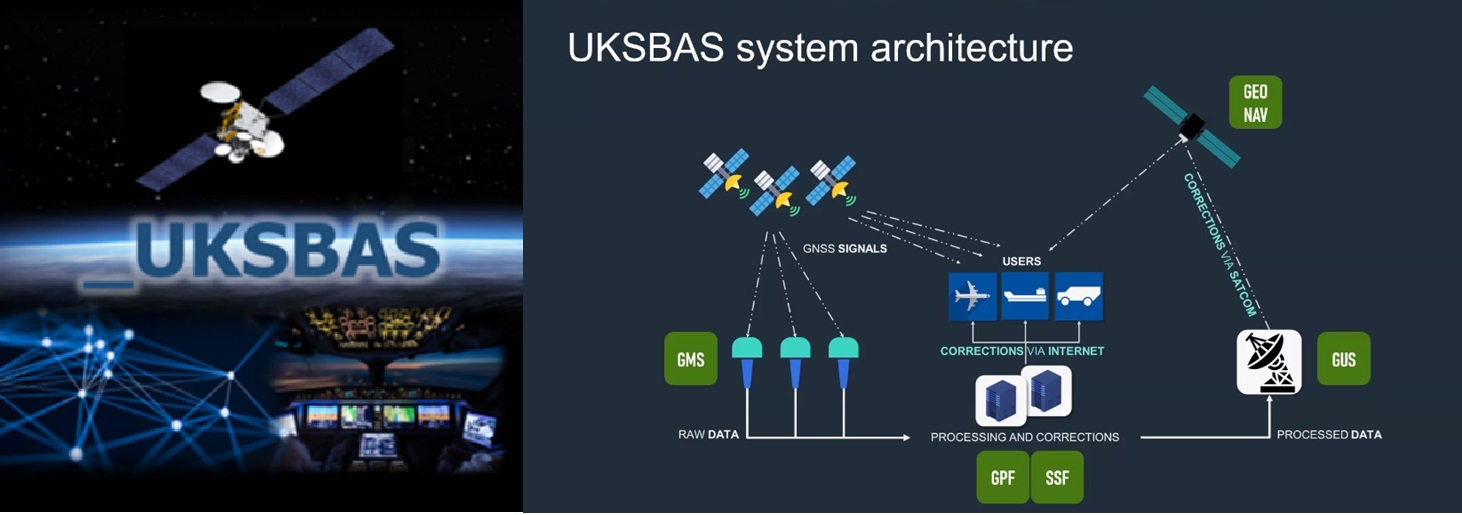Final Presentation of NAVISP Projects EL3-019 “UK SBAS Testbed” and EL3-025 and “UK SBAS Test-Bed Phase 2” Now Available
Last Updated: 19/12/2024 08:27 Created at: 19/12/2024 07:41

On Wednesday December 3rd 2024, the results of the NAVISP EL3-019 and EL3-025 activities ‘UK SBAS Testbed’ Phases 1&2 led by Viasat+Inmarsat were presented. This activity aligns closely with the need identified in the UK’s National strategy for PNT Resilience to investigate the feasibility of a UK Satellite-Based Augmentation System and was sponsored by the UK Department for Transport and UK Space Agency.
The UKSBAS Phase 1 activity was started during 2021 and resulted in the successful deployment of the initial testbed capabilities. This included the broadcast of an ICAO Standards and Recommended Practices (SARPs) compliant SBAS signal in space (SIS) using PRN code 158 via the Inmarsat-3F5 navigation transponder (54 degrees West), uplinked from the testbed Ground Uplink Station at Goonhilly Earth Station UK, with the navigation data overlay frames being generated using magicSBAS software installed at the UKSBAS testbed augmentation processing centre in Nottingham, UK (GMVNSL). Following on from this successful deployment, Phase 2 of the UKSBAS Testbed was started in March 2023. Phase 2A of the activity defined the options for a potential UKSBAS future system and service architecture and conducted live trials in Maritime and Aviation, and Phase 2B conducted live trials in Road and Rail. Viasat delivered the System and Service Concepts, as well as being the Satellite Operator and coordinating the Aviation Demonstration Event. GMV NSL completed the Ground Segment Testbed Development, SBAS message generation and performance assessment, in addition to the use case trials. Safety and Security Roadmaps were developed by CGI, Goonhilly provided the Ground Uplink Station and Ordnance Survey provided the ground monitoring data.
Within the limits of a Testbed, very good levels of accuracy and availability have been achieved, comparable to current operational SBAS. The user focused live trials demonstrated key benefits to Maritime, Aviation, Road and Rail sectors: Value has been found in a PPP (Precise Point Positioning) corrections service in the road/automotive sector, achieving decimetre-level positioning accuracy, compatible with preliminary autonomous driving accuracy requirements. The potential value towards ensuring safe operations for rail trackside workers has been demonstrated as a cost-effective wide area alternative to RTK (Real-time kinematic positioning). In a successful live aviation demonstration event at Cranfield, UKSBAS has demonstrated the potential to support landing procedures compliant with LPV200 service levels and preserving positioning integrity. A dedicated Maritime Integrity Service Facility has been developed, demonstrating adapted and flexible maritime solutions to optimize SBAS L1 and DFMC (Dual Frequency Multi Constellation) availability. Further evaluation is needed on the impact of using CORS (Continuously Operating Reference Stations) in a Safety of Life (SoL) service. The work has made a significant contribution to the UK’s national strategy. Work is ongoing to investigate potential commercial applications in SBAS markets globally.
The project was part of NAVISP Element 3, aiming to support national PNT strategies by providing support per country and possibly per domain for the development and promotion of products, applications and services based on PNT systems to foster national and international cooperation.
The slides are accessible here.
